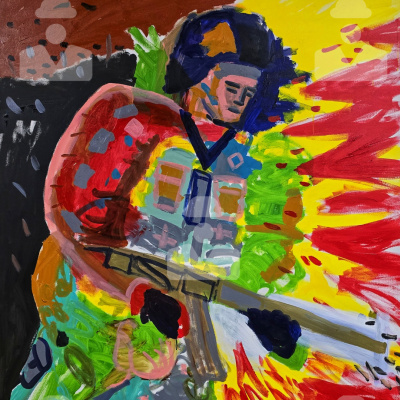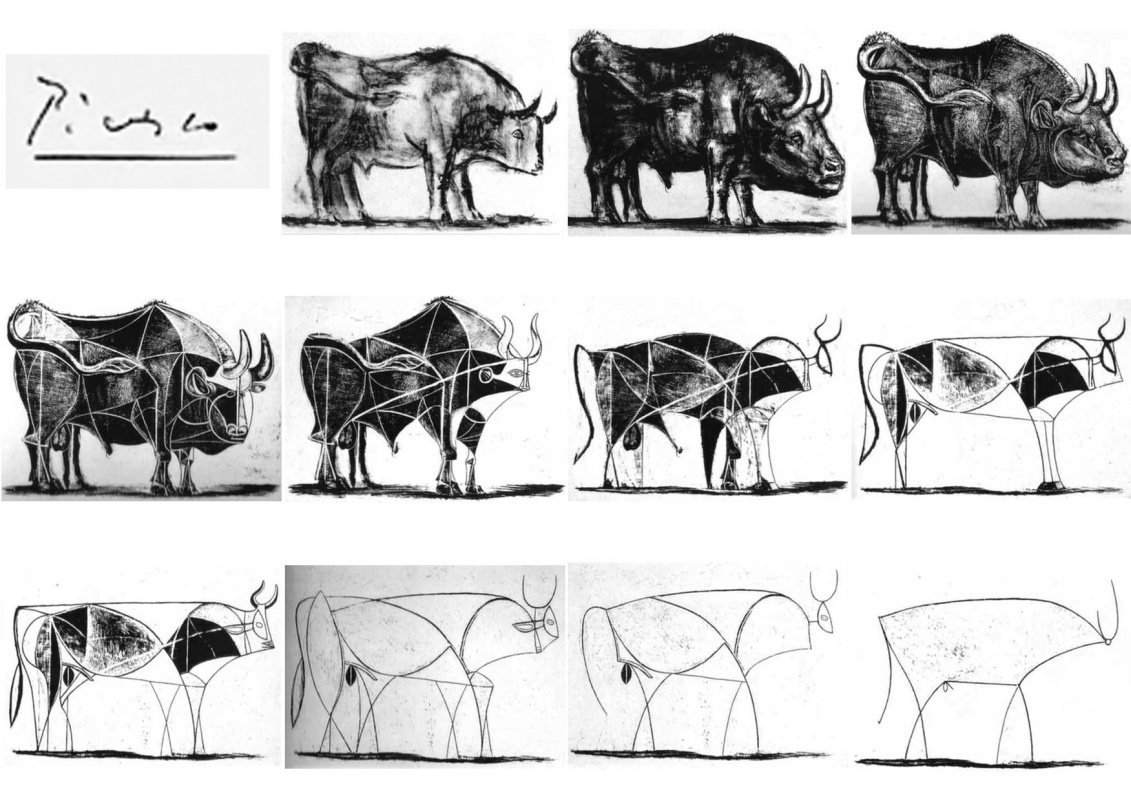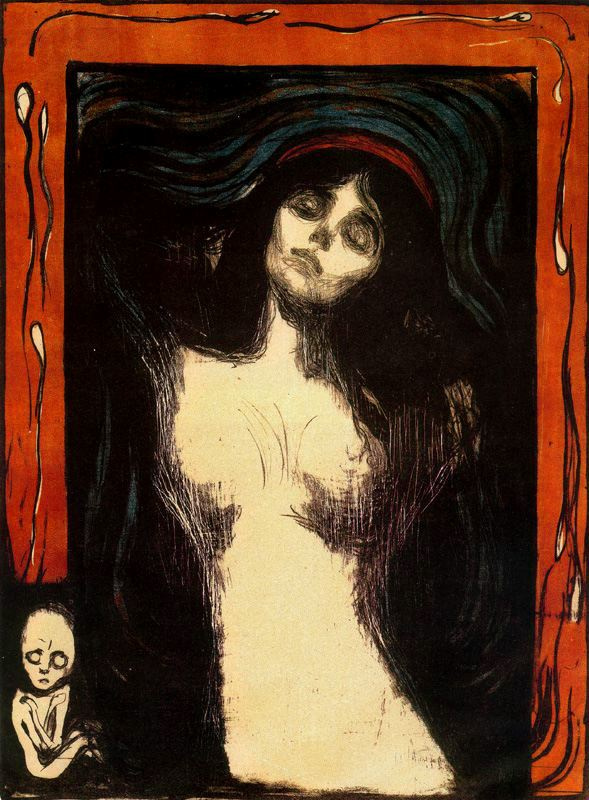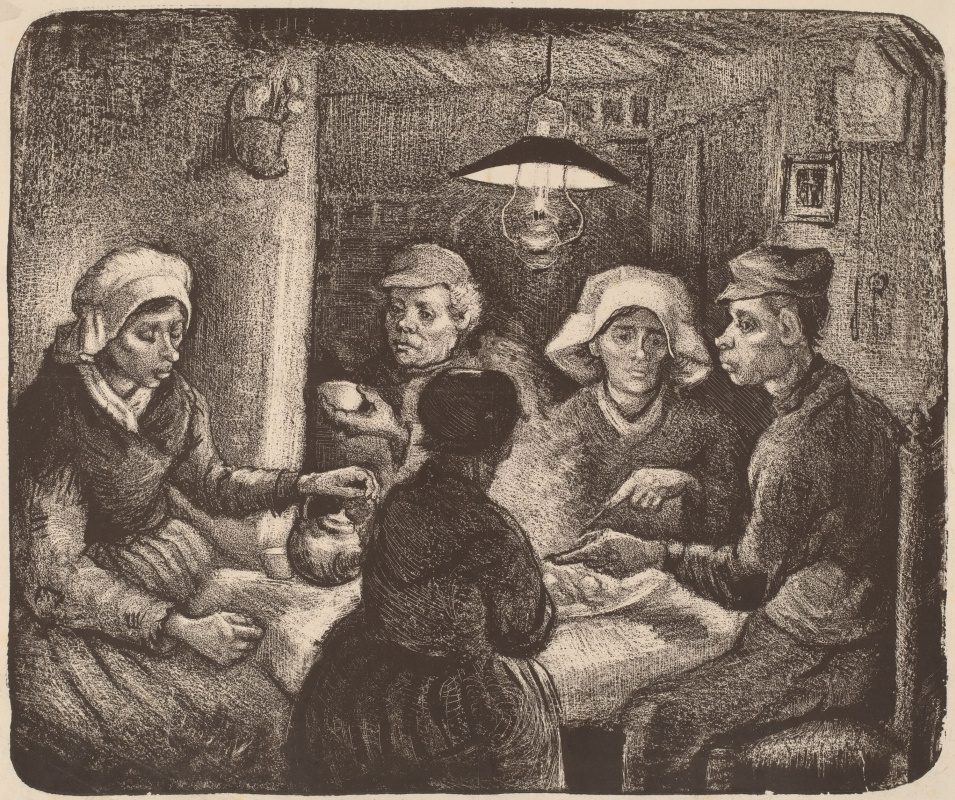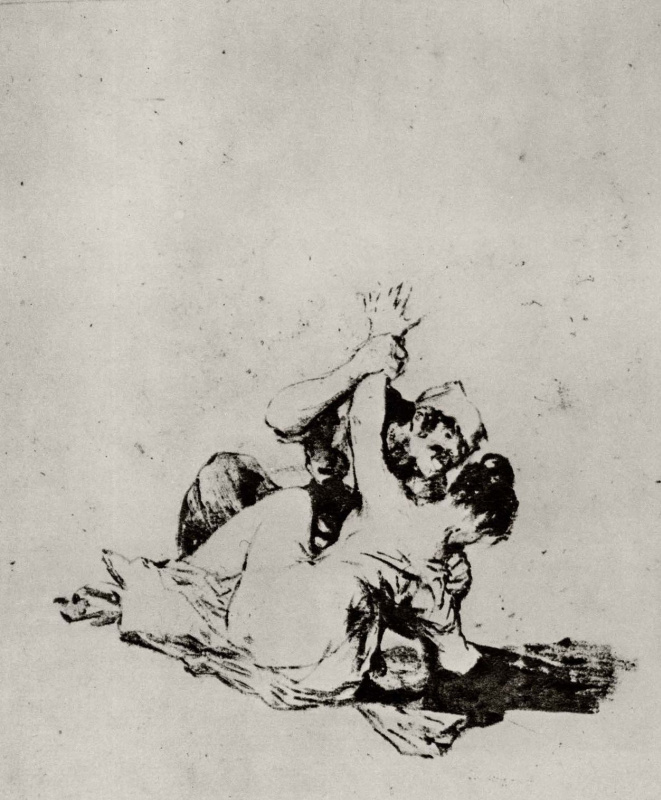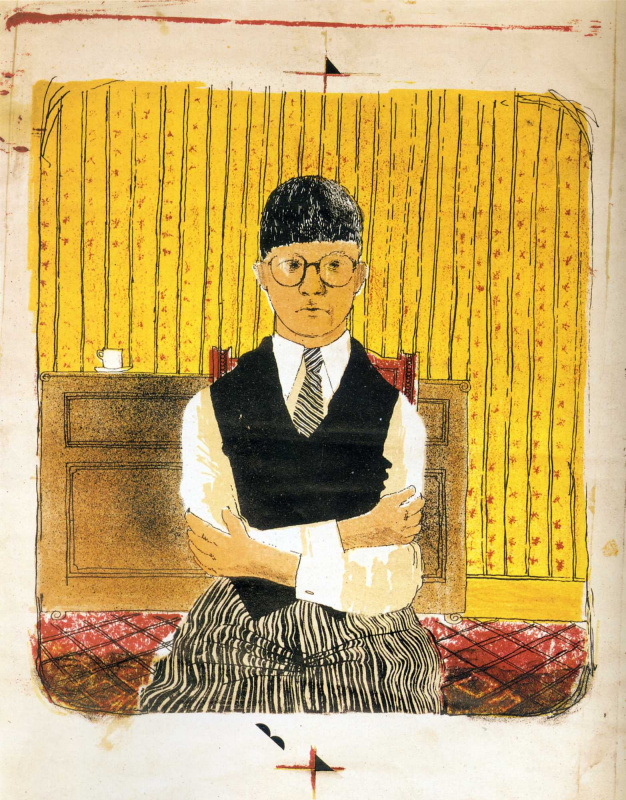
Alphonse Mucha, Advertising Poster for the Tissue Paper Job (1896). The Pushkin State Museum of Fine Arts
Next, gum arabic or its combination with a weak acid solution is applied to the stone. The very principle of lithography is based on the fact that water and oil do not mix. So the resin anchors the bold drawing with oil-based lithographic pencil, and the acid softens the exposed areas of the stone, which are to absorb water but repel the ink.
The original drawing is then washed off with a solvent, leaving a phantom trace of the image on the stone. The surface is poured with water, which is only absorbed in the areas treated with acid. On the moistened stone, a varnish-based printing ink is applied, it adheres to the non-etched parts of the stone in exact accordance with the pattern.
The stone is placed face up on a lithographic press, a moistened sheet of paper is placed on top. They are covered with a board called a deckle, and sometimes with several sheets of newsprint. This elastic layer ensures that the pressure of the pressure cylinder on the printing plate is well-balanced. The press is equipped with a clamping bar that provides smooth and uniform pressure on the stone surface.
Interesting facts about lithography. For more than 200 years, lithography hasn’t changed much, except that instead of heavy stones, aluminium or zinc plates are often used. The artist can do all the work himself (in this case, the engraving is called "author's lithography"), or just apply the drawing to the surface, and entrust the preparation of the plate and print to the printer. All works received in the process are considered originals, but the first one, which the author signs in the lower right corner, is of particular value. In the lower left corner, the serial number of the print and the number of printed copies are put down.













